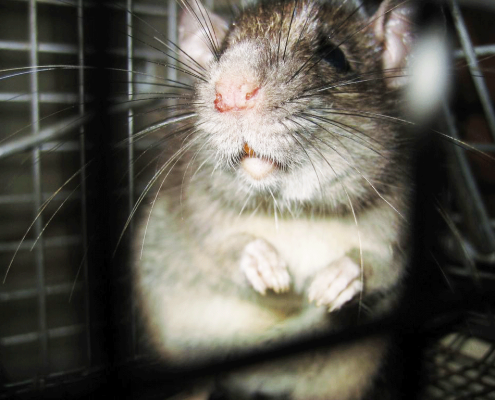
Rat Solutions
Rat Description
Roof Rat
Norway Rat
Roof Rat
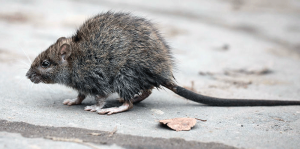
How to Identify A Roof Rat
Of the commensal rats, the roof rat is the smaller of the two. The other member of the commensal rats is the Norway rat. Another name for roof rats is black rats or ship rats. You guessed it right – roof rats got their name because of their preference of living in the upper region of buildings. These are not good guests to entertain in your house. Roof rats damage the materials in your home, pollute food and can harbor diseases in your dwelling.
It is said that roof rats originated from Southeast Asia. They have spread across the world and have particularly set up residence in tropical areas. They are also common along the coastal states, seaports and the southern parts of the United States of America. This article will examine the characteristics of roof rats and help you identify them quickly.
Norway Rat
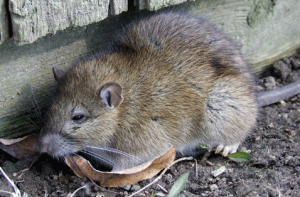
How to Identify Norway Rats
The Norway rat, also known as the brown rat, has a preference to dwell where humans are. It must be noted that rats search widely for food supplies. They subsist on a broad range of foods. It is this habit of searching far and wide that has contributed to their spread across the world. It is common for humans to react negatively to rodents, but they actually provide many benefits to the ecosystem.
This article will examine the characteristics of Norway rats. We will look at their appearance, their droppings, the sounds they make, how they eat, their behavioral patterns and how to prevent them from colonizing in your home.
Roof Rat
There are some features that you cannot mistake in a roof rat. They are typically long and thin with large ears and eyes. A pointed nose and a scaly tail are also distinct features of the roof rat. Their fur is soft and smooth and is normally brown with black spots. Their underbelly is typically white, gray or black. Mature roof rats measure up to 8 inches in length. Their tails measure from 7-10 inches and are much longer than their heads and bodies. When you consider the full measurement of the typical roof rat’s body and tail, you will realize that they can be more than 40 cm in length. They are around 5-9 ounces in weight but can grow to be up to 12 ounces.
Roof rats love to benefit from the heat of your attic. They are a bit like humans in that they like to seek out a space for warmth at night. Here are some sounds to listen out for to identify whether or not you have a rodent visitor in the upper regions of your property:
- Scratching – This may indicate that a rodent is moving around
- Gnawing – Roof rats are often eating so this chewing sound is usually picked up easily
- Scurrying – As the roof rats move from one point to another you will be able to hear this sound
- Squeaking – Some research shows that rats have the ability to communicate at a pitch that humans cannot hear. While this is true, they are often communicating with each other with a squeak that is identifiable.
Roof rats are mostly active in the night. This means that these sounds will more likely be heard at night.
Roof rats love to benefit from the heat of your attic. They are a bit like humans in that they like to seek out a space for warmth at night. Here are some sounds to listen out for to identify whether or not you have a rodent visitor in the upper regions of your property:
- Scratching – This may indicate that a rodent is moving around
- Gnawing – Roof rats are often eating so this chewing sound is usually picked up easily
- Scurrying – As the roof rats move from one point to another you will be able to hear this sound
- Squeaking – Some research shows that rats have the ability to communicate at a pitch that humans cannot hear. While this is true, they are often communicating with each other with a squeak that is identifiable.
Roof rats are mostly active in the night. This means that these sounds will more likely be heard at night.
As omnivores, roof rats have a tendency to eat almost anything that they can get access to. They still have a preference for nuts, berries, fruits and seeds. They will also feed on slugs and snails. Roof rats also eat insects such as roaches. If they are living in close proximity to bodies of water, they will eat the sea creatures that they can catch.
Roof rats will search for food several times per day, but they normally do much of their food hunting at night. Roof rats have a habit of saving food. So they will stack up on stores of seeds and nuts. They prefer to retreat to a safe and sheltered environment when it is mealtime.
There are some habits of the roof rat that must be kept in mind. This will help with the next step of eliminating them from your property. Roof rats hunt for food in small groups of about ten. When they have found a fruitful food source they will continuously return to it. They will follow the same pathway they traveled the first time to get back to the food spot.
Roof rats live in colonies and nest in the upper parts of buildings like attics and rafters. However, they don’t only live in roofs. They also live under structures or in piles of wood or debris. They generally prefer covered areas to use as their habitats. They are attracted to beautiful landscapes, vegetation and fruit trees. This means that properties with overgrown grass, piles of wood, and an abundance of storage boxes will attract roof rat infestations.
In their venture to get inside your house, roof rats are able to squeeze through access points that are just a little larger than a nickel. They often find their way into your home, garage, shed for safety from predators and for a spot to nest. They enter by tracing pipes or by biting their way through drywall, aluminum or wood.
These unwanted visitors tend to live only up to a year. However, they have the ability to produce up to 40 offspring during that one year of life.
Now that we know how they look and operate, we need to discuss how to prevent an infestation of roof rats. To prevent this, you must seal up areas that they can use to enter. These areas are holes and cracks that are larger than a nickel or quarter. Use silicone caulk to achieve this and be sure to use screens to cover windows and vents. Keep your garden well-groomed and make an effort to stop trees from hanging over your roof. These creatures are attracted to any food that they can access so ensure that you clean up fruit that might have fallen from trees. Also, be sure to keep garbage in well-sealed containers. Store food for your pet and other dry food in containers that are inaccessible to these unwanted guests.
With an understanding of how roof rats operate and how to prevent infestation, you should be safe. If you ever suspect that your home is infested, be sure to contact a licensed pest control professional to inspect and use a treatment plan to eradicate these rodents.
Norway Rats
Norway rats will typically have bristly brown fur with black hairs mingled in their coat. The underbellies of these rats are grey to off-white. There are some which bare a yellow-toned underbelly. They have small features such as eyes, ears and tails. Their tails are normally shorter than the size of their entire body and head. They grow to about 7-9 ½ inches in length. Their fur covers most of their bodies except their nose, tail and ears. There are members of this family that have been specially reared to be pets. These are usually white, black or brown. They tend to weigh 0.5 to 1 pound. Male Norway rats are normally larger than
females.
The state and look of droppings are dependent on the diet of the rodent. However, there are some common trends when it comes to Norway rat feces. They are up to ¾ inch in length and capsule-shaped. The droppings of brown rats are blunt and look similar to a dry raisin.
Norway rats employ a mixture of sounds. You can find them making hissing, chattering, and squeaking sounds. Like other rats, they can communicate different feelings with the help of a different frequency and pitch of noise. When they make a squeak or hiss, it usually means that they are experiencing fear or pain. They also have a practice of chomping and grinding their teeth. When they are inside your property, they make scratching, rustling and gnawing sounds.
These foragers are able to thrive on a large variety of food. A scientific study on the stomach of a rat revealed that it contained over 4,000 different items of food. In dense, urban regions, these rats survive on food that has been discarded by humans. This appetite they have for human food leads them to become pests, trespassing on human property in search of food.
Outside of these densely populated zones, Norway rats eat plants along with any other protein source that they can find. Within their diet are things like fish, lizards, chicks and even other rodents.
Knowing the behavioral patterns of these creatures can assist in preventing their infestation.
Norway rats are classified as social pests. They frequently build their dwellings close to other Norway rats. What does this mean? This means that if you find one burrow, it is highly likely that another is nearby. Their dwellings usually have at least one entrance and at least one other emergency escape hole. In their intelligence, they often hide the emergency exit under
grass or debris.
Norway rats tend to live in fields or farmlands when they are not living in homes. They set up their homes in garbage, piles of wood, under concrete slabs, near riverbanks and along the embankments of railroads. Brown rats usually head for houses when food and water are scarce. Note that these rats can fit through holes that are the size of a quarter. When Norway rats decide to live in a home, they nest in basements, undisturbed piles and other heaps of debris. The ground floor and sewers are also among their favorite areas to live. They prefer lower levels, but they can also be found in attics or roofs.
Norway rats are nighttime creatures. Their usual pattern is to hunt for food at dusk. They also do another food search just before dawn. While this is their usual pattern, they also forage during the day. Brown rats will transport their food from where they found it to less threatening areas.
With all the information above, you should be well equipped to recognize a Norway rat when you see one. While that information is good, you still need to know what to do and what to avoid to prevent Norway rats from infesting your property. For the most part, to stop them from colonizing your property, you need to eliminate their potential areas of shelter. You also need to ensure your house is rodent-proof and constantly sanitized. Search your home from time to time for signs of burrows. Other things to look out for are gnaw marks, feces, and footprints.
Use these tips and protect your family from these unwanted guests. An infestation of Norway rats can expose your family to diseases and other forms of disturbance. These little creatures can also damage the structure and piping of your house. You now know how to identify them and how to prevent them from colonizing your home. In an event where they, unfortunately, establish a stronghold in your home, do not hesitate to contact a certified pest management company. They will be able to rid your environment of these rats and implement a strategy to keep them away forever.
What’s the Difference Between Roof Rats and Norway Rats?
People typically use the word “rat” as a blanket classification of all rodents. Some will go as far as to call hamsters rats. The rodent family is much larger than many know. It has a great number of different relatives. While there exist many different types of rats, two that often disturb residents and business owners alike are Norway rats and roof rats. They may appear to be identical to the average eye, but they have a number of differences. This article will highlight the differences between roof rats and Norway rats.
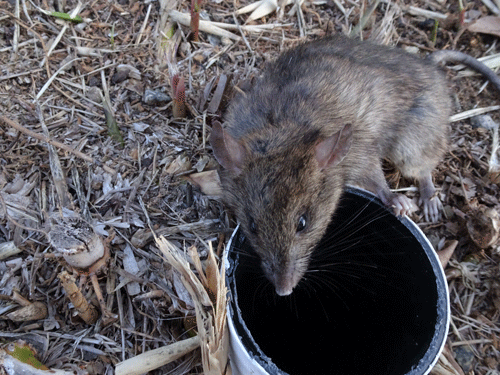
Do they look the same?
One of the things that quickly distinguishes a roof rat from a Norway rat is color. Roof rats typically have black fur with pale bellies. This is not the case with Norway rats as they have brownish-gray coats. Along with the color, there are also size differences between these two rodents. A mature roof rat can measure approximately eight inches in length. On the other hand, Norway rats can measure up to ten inches in length. You will also notice that Norway rats have much shorter tails than roof rats.
Do they have the same behavior?
Beyond appearance, the behavior of these rats makes them distinguishable. Roof rats tend to do their food hunting and shelter seeking above ground. You can also spot roof rats traveling by means of utility lines and even branches in an effort to access roofs and enter properties. On the other hand, Norway rats are known for their digging skills. They love to be close to the ground. They often leave burrows as they move around. Their preferred points of access are pipe gaps and vents. Keep in mind that both roof rats and Norway rats can swim. This means that they will try to gain access to your property through sewage lines and drainpipes. A quick way to pick up the presence of one of these two rodents is by looking if there are any bite marks on electric wires, shredded insulation, or droppings in your home.
Do they eat differently?
Roof rats and Norway rats are omnivorous. In light of this, they both eat from a broad range of foods. While they both eat a wide variety, they have individual preferences. When these rodents are living outside, they tend to seek food outside. If they do not have ease of access to food outside, they will enter homes and other properties to seek food and then return to their habitat. There are some who will nest and live continually within a home and partake in the food that is available in that home. Roof rats have a preference for fresh vegetables, seeds, fruits, plants, corn and wheat. Norway rats have a special liking for foods that are high in carbohydrates and proteins. This means that you will find them seeking animal feed, fruits, vegetables, meat, sugar, flowers, corn, wheat, bread, beans and even other vulnerable rats.
Are there differences in their droppings?
Another way to differentiate between these two rodents is by examining their droppings. The droppings that you will see from roof rats are shaped like a spindle and are about ½ inch in size. The feces from a Norway rat is shaped like a capsule. The presence of droppings in your home is always a way to know if you have rodent visitors. Use these differences to know if you are dealing with a roof rat or a Norway rat.
At first glance, rats and mice might appear to be the same species. They are both from the rodent family, they have a similar body structure, and seem to live similar lives. But there are significant differences between rats and mice that make each of them unique. It should be noted that the terms “rat” and “mouse” are not scientific classifications, but rather colloquial terms used to describe both species. Understanding the differences starts with what makes each rodent a rat or a mouse. 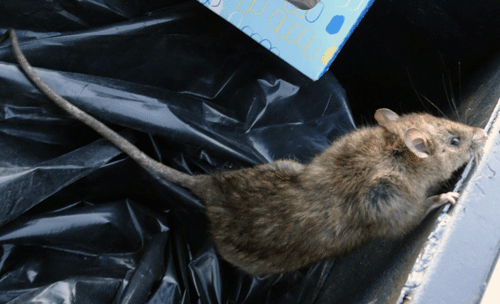
Rats
These are medium-sized members of the rodent family. They sport long, thin tails, triangular-shaped heads, and can be found around the world. Some of the most common are Norway rats, wood rats, black rats, and even naked mole rats. Keep in mind that these different species of rats may not be that closely related.
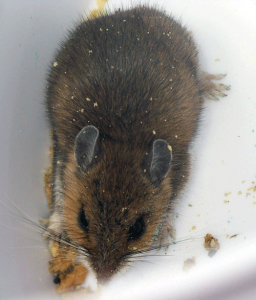 Mice
Mice
Mice are small members of the rodent family that also sport long, thin tails. They are some of the most common and perhaps oldest mammals in the world. From deer mice to spiny mice to dormice, there are many different species that may or may not be that closely related.
Differences: The most significant difference is that rats and mice are not the same species despite their generally similar appearance. It is true that a small, young rat will bear a striking similarity to an adult mouse, that will change as the rat matures into adulthood.
Size: Rats are generally heavier, longer, and overall larger than mice. A typical rat grows to be nine to eleven inches long, not including the tail which can be up to nine inches as well. Plus, rats weigh on average from three-quarters to one and a half pounds or 350 to 650 grams. Mice are far smaller with body lengths that average three to four inches long, including tails that are about the same length. Plus, they weigh on average 30 to 90 grams which can be one-tenth the weight of a typical rat.
Head: Another big difference is that the head of a rat tends to be heavy, feature a wide muzzle, and relatively tiny ears in relation to their heads. The head of a mouse tends to be small, narrower, and have a pointed muzzle.
Nipples: This is an obvious visual difference in that rats have six nipples while mice have only five.
Chromosomes: Rats, such as Norway rats have 22 chromosomes whereas common house mice have only 20. This may seem like a small difference, but it is quite large because it indicates they are a different species.
Burrowing: Rats are burrowing mammals while mice do not burrow. Instead, mice create nests near their food sources. Rats however will not only burrow, their strong teeth can chew through tough materials that include concrete and even aluminum. Although they are both rodents, rats and mice are considerably different in terms of their size, shape, and features even down to their chromosomes. The differences are important ones as they are two different species that happen to share a few common characteristics.
